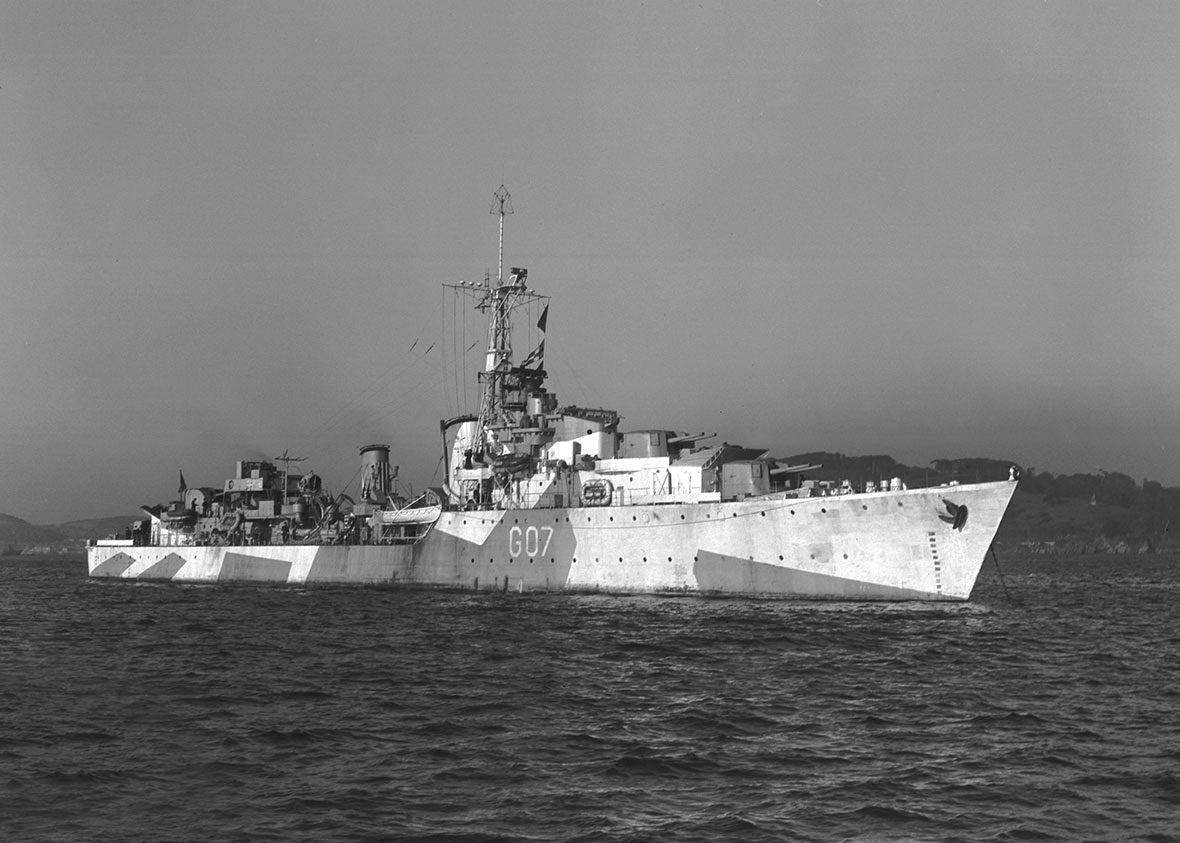Navy’s tie to Indigenous peoples of Canada
By Lookout on Jun 13, 2018 with Comments 3
Courtesy the Maple Leaf ~
The Royal Canadian Navy (RCN) has a long history of ties to the Indigenous peoples of Canada. In fact, it paid homage to them by naming two separate classes of ships after them – the wartime Tribal-class and the post-war Iroquois-class destroyers – and several other vessels, including three Oberon-class submarines.
The RCN is honoured to have these names from Indigenous peoples of Canada associated with its ships over the past several decades.
Tribal-class destroyers
The Tribals were a class of destroyers built for the Royal Navy, RCN and Royal Australian Navy, and saw service in nearly all theatres of the Second World War. Only one Tribal survives to this day: Her Majesty’s Canadian Ship (HMCS) Haida, which is now a museum ship in Hamilton, Ont. These ships proudly bore the names of several Indigenous groups from across Canada.
HMCS Iroquois served in the RCN during the Second World War and the Korean War. Iroquois was the first ship to bear this name and the first ship of the class to serve with the RCN.
HMCS Athabaskan (first of name) was the first of three destroyers to bear this name. It served in the Second World War. It was torpedoed in the English Channel and sunk in 1944.
HMCS Huron served in the RCN in the Second World War and the Korean War. It was the first ship to bear this name, serving from 1943 to 1963.
HMCS Haida served in the RCN from 1943 to 1963, serving in the Second World War and the Korean War. The only surviving ship of the Tribal-class, Haida sank more enemy surface tonnage than any other Canadian warship. It is now a museum ship in Hamilton, Ont.
HMCS Micmac served in the RCN from 1945 to 1964. It was the first sophisticated modern warship built in Canada and the first of four Tribal-class destroyers built at the Halifax Shipyard.
HMCS Nootka served in the RCN from 1946 to 1964. Constructed too late to take part in the Second World War, the ship saw service in the Korean War.
HMCS Cayuga served in the RCN from 1946 until 1964 and saw action in the Korean War.
HMCS Athabaskan (second of name) served in the RCN in the immediate post-Second World War era and was the second destroyer to bear the name. Built too late to see action in the North Atlantic, Athabaskan served in the Korean War.
Iroquois-class destroyers
The Iroquois class included four helicopter-carrying, guided missile destroyers. Like the wartime Tribal-class ships before them, these ships were named to honour the Indigenous peoples of Canada. Launched in the 1970s, they were originally fitted out for anti-submarine warfare, using two CH-124 Sea King helicopters and other weapons.
HMCS Iroquois was the lead ship of the Iroquois-class destroyers. The second vessel to carry the name, it entered service in 1972 and was based in Halifax. The ship was taken out of service in 2014 and paid off in 2015.
HMCS Huron served in the RCN from 1972 to 2000. It served mainly on the West Coast of Canada. After decommissioning, its hull was stripped to be used in a live-fire exercise. It was eventually sunk by gunfire from its sister ship, HMCS Algonquin. It was the second vessel to use the designation HMCS Huron.
HMCS Athabaskan served in the RCN from 1972 until 2017. It was the third vessel to use the designation HMCS Athabaskan.
HMCS Algonquin served in the RCN from 1973 to 2015. It was the second vessel to use the designation HMCS Algonquin.
Oberon-class submarines
HMC Submarines Ojibwa, Okanagan and Onondaga were built in England and commissioned between 1965 and 1968. These were Canada’s first truly operational submarines, also named for Indigenous peoples of Canada.
HMCS Ojibwa, originally intended for service with the British Royal Navy, was transferred to Canadian ownership and entered RCN service in 1965. Ojibwa operated primarily with Maritime Forces Atlantic until her decommissioning in 1998. In 2010, Ojibwa was laid up in Halifax awaiting disposal, with the Elgin Military Museum planning to preserve her as a museum vessel. The submarine was towed to Port Burwell, Ont., in 2012, and was opened to the public in 2013.
HMCS Okanagan entered service in 1968 and spent the majority of its career on the East Coast. The boat was paid off in 1998 and sold for scrap in 2011.
HMCS Onondaga was built in the mid-1960s and operated primarily on the East Coast until its decommissioning in 2000 as the last Canadian Oberon. The Site historique maritime de la Pointe-au-Père in Rimouski, Que., purchased the boat for preservation as a museum vessel. The submarine was moved into location in 2008 and is open to the public.
Other ships and units
The names of other RCN ships – including several River-class destroyers, Bangor-class minesweepers and Flower-class corvettes, as well as shore-based units including Naval Reserve Divisions – have also been based on Indigenous culture throughout the decades. This tradition carries on into today’s fleet, with ships such as HMCS Yellowknife and HMCS Toronto. These ships were all named after Canadian geographic locations, such as cities and rivers. The names of these locations were all derived from their local Indigenous languages.
Filed Under: Top Stories
About the Author:







Barbering courses
Navy’s tie to Indigenous peoples of Canada : Pacific Navy News
Fascinating topic! Looking forward to a follow-on article on the history of Indigenous RCN members.
These were great warships.I served aboard the Nootka from 60-61 and the Haida from 62-63.Have visited the Haida in Hamilton.Very proud of our Navy. CPO1(ret”d)Roger Bronson, Milford, Nova Scotoa. Love the website.